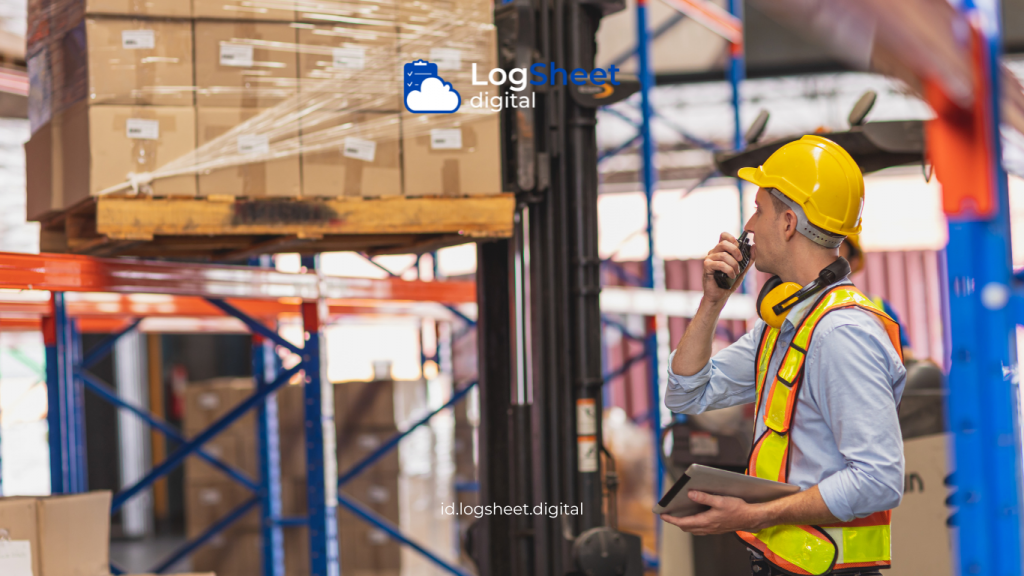Digitalization has brought significant changes in how companies and organizations manage their data. One of the most significant changes is the replacement of manual logsheets with digital logsheets. Manual logsheets that were once used to record daily operational data often became sources of errors and inefficiencies. In contrast, Digital Logsheets for Data Analysis offer a faster, more accurate, and integrated way to collect and analyze data.
The application of digital logsheets is no longer limited to simple record-keeping; it has become a strategic tool that allows companies to gain deeper insights from the data they collect. With a digital system, data analysis becomes more effective, ultimately aiding in better, data-driven decision-making.
What is a Digital Logsheets?

Read More: Digital Logsheets as a Real-Time Monitoring Tool in Quality Control
Digital logsheets are technology-based platforms that enable the electronic collection, recording, and processing of data. Unlike traditional logsheets that require manual recording on paper, digital logsheets use software and cloud systems to automatically and structurally record data. With this system, companies can store, manage, and access data in real-time.
The primary function of digital logsheets is to provide a more accurate and comprehensive overview of a business or organization’s daily operations. The data recorded in digital logsheets can include anything from production monitoring, equipment performance, to calibration and quality inspection data.
Advantages of Digital Logsheets

Read More: Digital Logsheets as a Pillar Towards Quality 4.0 in Industry
1. Higher Data Accuracy
One of the main advantages of digital logsheets is the accuracy they offer. In manual systems, data is often prone to recording errors due to human negligence. Digital logsheets minimize this risk by performing automatic recordings, ensuring that the data generated is always accurate and consistent.
2. Time and Cost Efficiency
By switching to digital logsheets, companies can save a significant amount of time previously spent on manual data entry and management. Data collection processes become quicker, and analysis can be performed automatically. Additionally, digital logsheets reduce paper usage, ultimately helping to cut operational costs.
3. Real-Time Access
Another benefit of digital logsheets is the ability to access data in real-time. With direct access to current data, managers and stakeholders can immediately take action if needed. The data collected can be accessed from anywhere at any time, as long as they are connected to the cloud system or software being used.
4. Structured and Secure Data Storage
Digital logsheets allow for organized and secure data storage. All collected data is stored in a digital format that is easily accessible and searchable. Additionally, data security is a priority in digital logsheets, with features such as encryption and user authorization to prevent unauthorized access.
5. Integration with Other Systems
Digital logsheets also have the capability to integrate with other management systems such as ERP (Enterprise Resource Planning), CMMS (Computerized Maintenance Management System), or IoT (Internet of Things) platforms. This facilitates data exchange between systems and ensures that all operational aspects of the company are monitored comprehensively.
Deeper Data Analysis with Digital Logsheets

Read More: Implementation of Digital Logsheets for Improved Quality Oversight
1. More Comprehensive Data Collection
One of the main strengths of digital logsheets is their ability to gather more comprehensive data compared to traditional methods. The data collected is not limited to a small amount but covers various operational aspects, from machine performance to working environment conditions. With more data collected, the analyses performed become more in-depth and accurate.
2. Data Visualization
Digital logsheets are typically equipped with data visualization features, such as graphs and charts. This allows users to quickly understand trends and patterns in the collected data. With this visualization, business leaders can easily identify areas that require improvement or optimization.
3. Predictive Analysis
Digital logsheets can be integrated with predictive analytics technology, allowing companies to project future trends based on historical data. This is particularly useful in strategic planning and more proactive decision-making. For instance, in equipment management, predictive analysis can help forecast when a machine may require maintenance before major breakdowns occur.
4. Data-Driven Decision Making
With more accurate and in-depth data, decision-making becomes more targeted. Companies no longer rely on intuition or assumptions but on concrete data that has been analyzed. Decisions made based on data tend to be more effective because they are supported by real evidence.
Case Studies: Implementation of Digital Logsheets in Industry

Read More: Enhancing Security and Quality of Delivery: Digital Logsheets in Logistics
1. Manufacturing
In the manufacturing industry, digital logsheets play a crucial role in monitoring daily production, machine performance, and product quality. With real-time data available, production managers can quickly identify any issues on the production line and take corrective actions promptly. Additionally, the data collected from digital logsheets can also be used for long-term analysis, such as identifying machine failure patterns and improving production efficiency.
2. Energy
The energy industry, particularly the power generation sector, uses digital logsheets to track equipment performance, fuel consumption, and gas emissions. The data collected helps energy companies comply with environmental regulations, as well as optimize resource usage to reduce operational costs. Digital logsheets also enable energy companies to plan preventive maintenance based on performance data analysis.
3. Transportation and Logistics
In the transportation and logistics industry, digital logsheets simplify the tracking of goods movements, delivery schedules, and vehicle conditions. The data collected can be used to predict more accurate delivery times, optimize delivery routes, and minimize damage to goods. The use of digital logsheets also allows logistics companies to respond more swiftly to changes in market demand.
Challenges in Implementing Digital Logsheets

Read More: Improving Quality Oversight with Digital Logsheets: Workshop Industry Case
Despite the many benefits digital logsheets offer, their implementation is not without challenges. One of the main challenges is resistance to change from employees accustomed to manual methods. Training and education are crucial to ensure that all users understand how to effectively use digital logsheets.
Furthermore, companies must consider the initial investment required to adopt this technology. Digital logsheet systems require robust IT infrastructure, including software, hardware, and reliable connectivity.
Conclusion

Read More: Optimal Quality: Digital Logsheets & Raw Materials
Digital logsheets have proven to be a highly useful tool in supporting deeper data analysis and better decision-making. With advantages in accuracy, efficiency, and integration with other systems, digital logsheets enable companies not only to manage their daily operations better but also to leverage data for long-term strategies.
In an increasingly competitive business world, decisions based on accurate and structured data are key to achieving success. Therefore, digital logsheets have become not just a recording tool, but a strategic asset for companies wanting to stay ahead in this digital era.






comments (0)